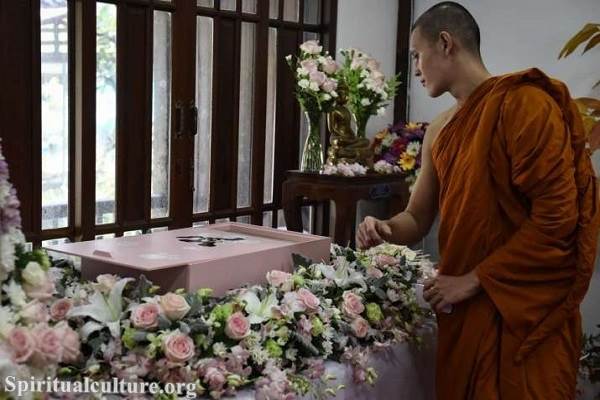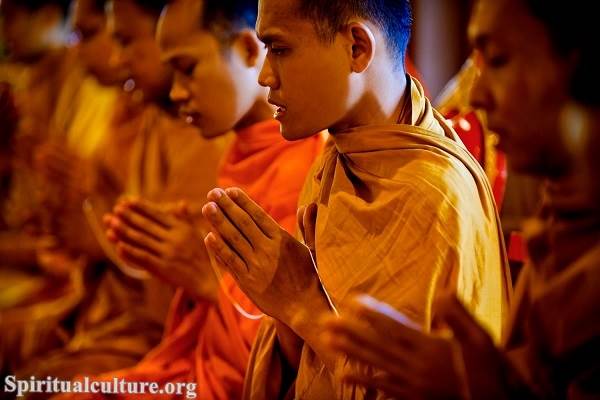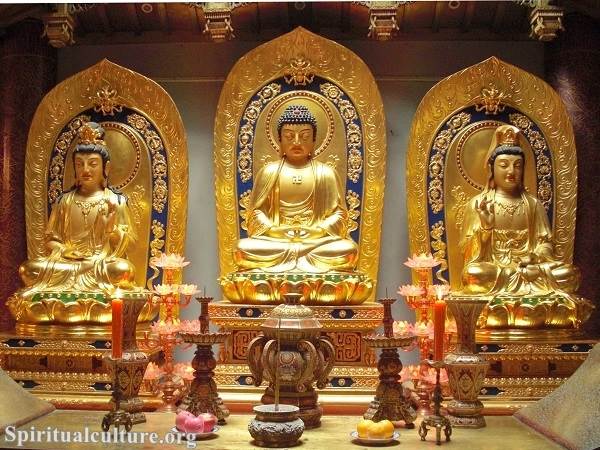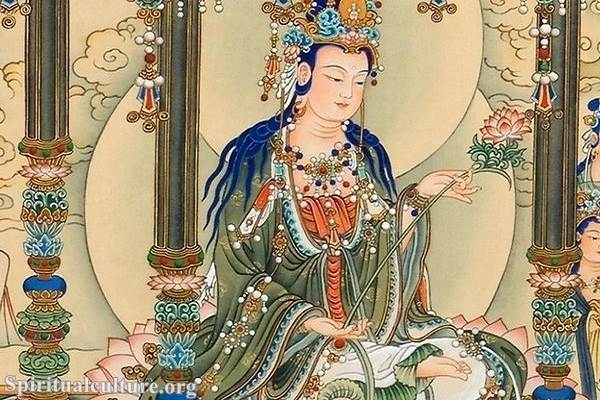However, some common elements are often present in Buddhist funeral ceremonies.
What is a Buddhist Funeral?
Buddhist funeral traditions vary among different schools of Buddhism and according to cultural practices. However, some general elements are commonly found in Buddhist funeral ceremonies.
Typically, Buddhist funerals are simple and dignified affairs meant to honor the deceased and help the bereaved accept the reality of death. The deceased’s body is usually cremated, and the ashes may be interred in a cemetery or scattered in a place that is meaningful to the deceased.
The funeral ceremony may include chanting by monks, a eulogy or tribute to the deceased, and sharing memories and stories about the deceased. The ceremony may also include the recitation of specific Buddhist texts or the lighting of incense or candles.
 In some cases, the funeral ceremony may also include a ritual in which the mourners offer food, drink, and other items to the monks as an act of merit-making. This is believed to help the deceased and to provide comfort and support to the bereaved.
In some cases, the funeral ceremony may also include a ritual in which the mourners offer food, drink, and other items to the monks as an act of merit-making. This is believed to help the deceased and to provide comfort and support to the bereaved.
It is important to note that the specifics of a Buddhist funeral will depend on the wishes of the deceased and the family and local cultural and religious traditions. It is always best to consult with a Buddhist clergy or funeral director to plan an appropriate and respectful funeral.
Buddhist Death Rituals
In Buddhism, death is seen as a natural part of the cycle of life and a time to let go of attachment to the physical body. The rituals and practices surrounding death vary among different schools and traditions of Buddhism, but some common elements are often observed.
One common practice is reciting certain texts or mantras, such as the “Heart Sutra” or the “Om Mani Padme Hum,” which are believed to help guide the person’s consciousness through the process of death and into the next life.
It is also common for loved ones and friends to offer prayers and make merit on behalf of the person who has passed away as a way of creating good karma and helping to ease their transition.
In some traditions, offering food, flowers, and other items to the deceased and monks or other spiritual practitioners is also customary.
It is important to note that the specific rituals and practices surrounding death in Buddhism may vary depending on the individual and their cultural and spiritual background. It is always a good idea to seek guidance from a spiritual teacher or qualified practitioner if you have questions or are seeking support during this time.
Buddhist Funeral Traditions and Customs
Buddhist funeral traditions and customs vary depending on the country and cultural tradition in which they are practiced. However, some common elements are often included in Buddhist funerals.
One common element of Buddhist funeral traditions is the recitation of sutras or scriptures. The family may recite these, a monk or other religious leader, or the attendees.
Another common element is the creation of a shrine or altar, which may include photos or other mementos of the deceased. This shrine may be used as a focus for prayers and offerings.
Buddhist funerals often include the use of incense and candles, which are used to symbolize the deceased’s spiritual journey.
In some traditions, the deceased’s body is cremated, and the ashes may be interred in a cemetery or scattered in a meaningful location. In other traditions, the body is buried in a cemetery.
It is also common for a period of mourning following a Buddhist funeral, during which the family and friends of the deceased may continue to offer prayers and make offerings at the shrine.
Overall, Buddhist funeral traditions and customs are designed to honor and pay tribute to the deceased and to provide a sense of closure and comfort for the family and friends of the deceased.
Buddhist Mourning Period
In Buddhism, there is no specific prescribed period of mourning after the death of a loved one. However, it is common for Buddhists to observe certain customs and practices as a way of honoring the deceased and providing support to those who are grieving. These customs and practices can vary depending on the individual and the cultural context in which they are practiced.
Some common practices that may be observed during the period of mourning include:
– Offering prayers, chanting or performing other religious rituals to honor the deceased
– Making donations to the temple or other charitable organizations in the name of the deceased
– Participating in ceremonies or rituals to transfer merit to the deceased
– Observing periods of silence or solitude as a way of reflecting on the impermanence of life and the nature of death
It is important to note that in Buddhism, the ultimate goal of these practices is not to erase or eliminate grief but rather to help the grieving person come to a place of acceptance and peace. In this way, the mourning period can be seen as an opportunity for spiritual growth and transformation.
Buddhist Funeral Etiquette
Buddhist funeral customs vary among different schools of Buddhism and cultures. However, some general guidelines are followed in many Buddhist funeral ceremonies. Here are some common practices:
– Offer condolences to the family: It is appropriate to express your condolences to the deceased’s family. In some traditions, bringing food or gifts to the family is customary to show your support.
– Dress modestly: It is appropriate to dress modestly, in plain, dark colors, at a Buddhist funeral. Bright colors and flashy clothing should be avoided.
– Observe silence: It is customary to observe silence during a Buddhist funeral as a sign of respect for the deceased and to allow the family time to mourn.
– Offer incense: Incense is often offered at a Buddhist funeral to honor the deceased and show respect.
– Participate in chanting: Chanting is common in Buddhist funeral ceremonies. You may be asked to participate in chanting by chanting along or simply by listening and observing.
– Donate: It is common to donate to the temple or the family of the deceased in lieu of flowers.
– Pay respects to the deceased: It is appropriate to pay your respects to the deceased by bowing or placing your palms together in a prayer-like gesture.
It is important to remember that Buddhist funeral customs may vary depending on the specific tradition and culture, so it is always best to follow the lead of the family of the deceased and the Buddhist community.




